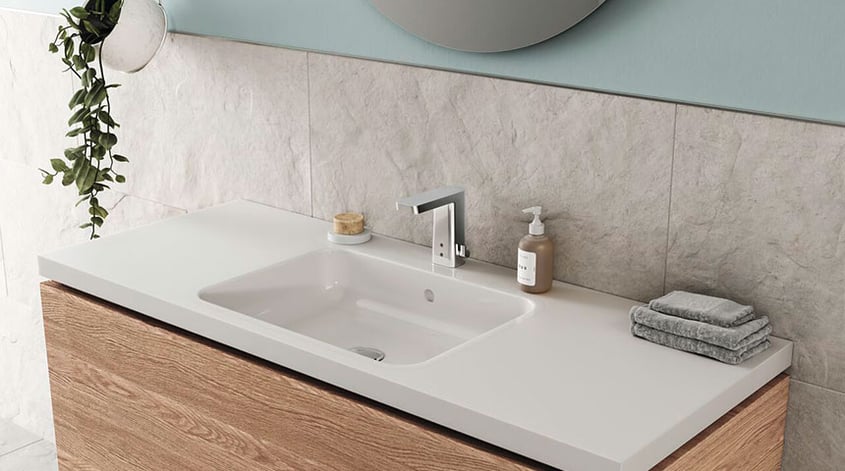
Touchless faucets – previously used mainly in public places – are becoming more and more popular in private homes as well. Not only are they hygienic and save water and energy, they’re also user-friendly – and are becoming an easy choice when planning faucet solutions at home.
We asked Sari Adolfsson from Oras technical support what are the main questions from consumers are regarding today’s touchless faucets:
“Consumers are interested in touchless faucets more and more all the time. Their main questions tend to be about how to maintain touchless faucets, how long their battery will last, and are there any special requirements when it comes to installation.”
Oras touchless faucets are manufactured to operate either with battery power or connected to a building’s electricity network. In private homes, battery powered models are more common. Installing a touchless faucet is as easy as installing a traditional faucet – no professional electrician is needed when you choose a battery operated model.”
How often the does the battery need to be changed?
Touchless faucets are powered by lithium batteries, which release power evenly and enable longer battery lifetime.
“Battery changing frequency depends mainly on level of use. On average, one battery lasts about two years. A red light built into its motion sensor indicates when the battery is losing its power and it’s time to replace it," Adolfsson says.
How is the battery changed?
In most faucet models the battery is located under the washbasin attached to the cable of the sensor.
“For example, in the Oras Optima and Oras Cubista models there is a capsule for the battery under the washbasin, positioned to make the battery easy to replace. In some models changing batteries requires removal of the spout, which means that the work is better left to professionals.”
How are touchless faucets maintained?
Regular cleaning is part of every bathroom’s basic hygiene. Wiping a faucet with a wet cloth regularly helps to keep it in good shape.
“Touchless faucets are actually even easier to keep clean than so called traditional models. As the name suggests, they are touched less often with unwashed hands and also contains fewer impurity-collecting seams.
If the water flow diminishes or is blocked, the first thing to do is check the purity of the aerator. The aerator is designed to stop water impurities and thus sometimes it may clog, but it is easy to open and clean at home.”
-block-desktop-860x480.jpg?width=940&name=40210_Hansa_Vantis_Style_Basin01_Hansa_Vari_oh_IR.tif(1)-block-desktop-860x480.jpg)

-block-desktop-860x480%20(1).jpg?width=940&name=Oras_Romantic_V3.jpg(1)-block-desktop-860x480%20(1).jpg)

